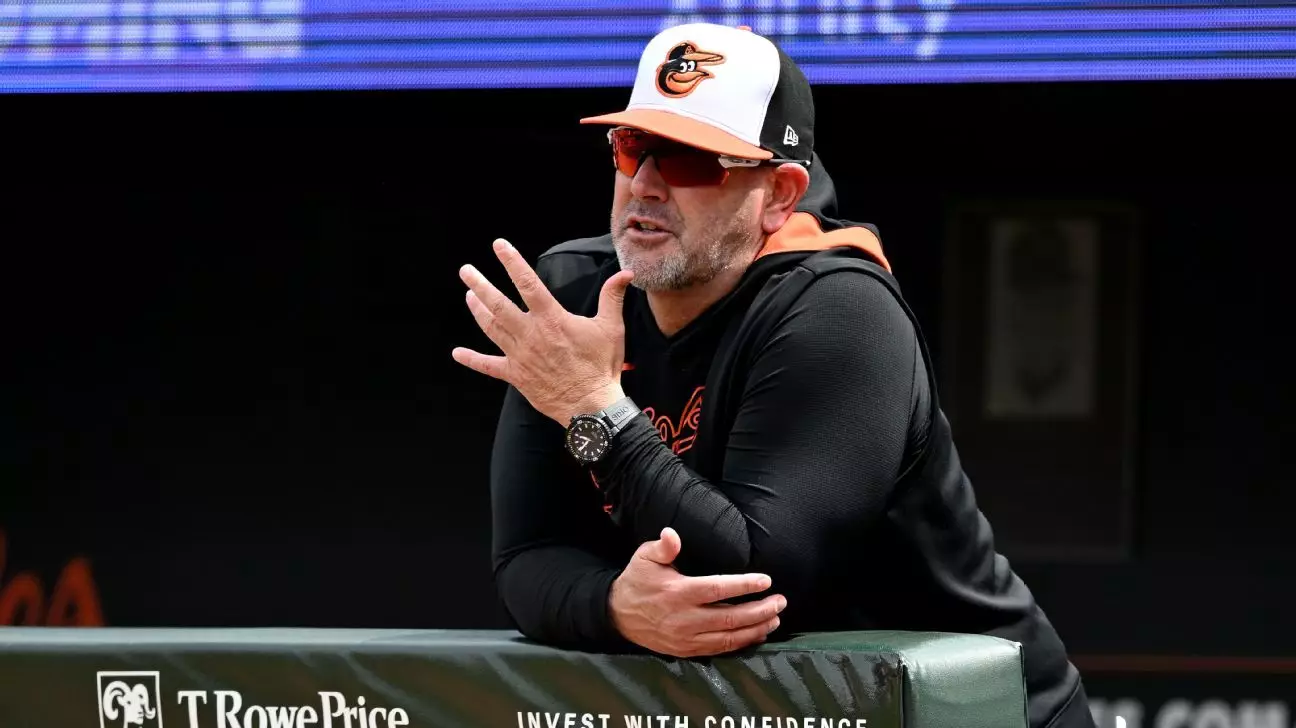The Baltimore Orioles kicked off Sunday with high hopes as experienced right-hander Charlie Morton took to the mound, aiming to reverse a trend of disappointment and underperformance within a rotation that has struggled dramatically. Signed to a one-year, $15 million contract, Morton—at 41 years old—was expected to lend veteran stability to a young, burgeoning team. However, what transpired was representative of the larger systemic issues plaguing the Orioles’ pitching. The game concluded in an embarrassing 24-2 defeat against the Cincinnati Reds, crystallizing the dire state of Baltimore’s pitching staff.
Manager Brandon Hyde’s candid commentary encapsulated the mood—“It’s embarrassing,” he lamented, denoting not just the loss but the manner in which it unfolded before the home crowd on Easter Sunday. Such statements reveal an urgent need for reflection and reassessment within the organization as they navigate the early part of the season.
The Dismal Performance of Morton
Morton, with a history of success as a two-time All-Star, has found himself in a position of accountability that now seems insurmountable. His performance against Cincinnati was a significant letdown, yielding seven runs in just 2.1 innings, which elevated his bloated ERA to a staggering 10.89. “It’s letting your teammates down, it’s letting your coaches down, your fans down,” Morton expressed, articulating the immense pressure and psychological toll on athletes who strive to meet expectations yet grapple with their form. A healthy but erratic Morton raises questions not only about his future but about the overall health of the rotation.
A chronic issue persists—Morton has surrendered a staggering 31 hits and 15 walks across just 20.2 innings pitched. These statistics are indicative of a deeper malaise, one that reflects not only individual struggle but also the lack of a cohesive strategy among the pitching staff. With Morton struggling to assess the effectiveness of his pitches, fans are left to wonder if the issue is intrinsic to his capabilities or a broader problem within the Orioles’ coaching and development approaches.
Multiple Injuries Compounding the Problem
While Morton’s consequences are glaring, the situation is worsened by a grim injury report. The Orioles are contending not just with underperformance but also with absences due to injuries—young right-hander Grayson Rodriguez’s return has been stalled due to shoulder concerns, seeking second opinions after undergoing an MRI. Similarly, Albert Suarez and Zach Eflin have landed on the injured list, shedding light on the fragility of their rotation. The absence of these key pieces has compounded the pressure on remaining pitchers and exposed the lack of depth in supporting roles.
The overall outlook is troubling, as Baltimore’s starting pitchers boast a disheartening 6.11 ERA, the worst in the American League. The inconsistency of their performance means that even when the offense shows promise, the team cannot consistently convert those opportunities into wins. The stark contrast between their dynamic offensive capabilities and abysmal pitching creates a dissonant experience for fans and players alike.
Finding a Silver Lining in Adversity
In the backdrop of this turbulence, there lies a flicker of hope. The recent performance by MLB debutant Brandon Young, although not shining brightly, demonstrated potential—his relatively mild outing of three runs over four innings in a previous game provided a semblance of stability amidst chaos. The young pitcher offers a glimpse into an emerging group of talents that might help rejuvenate the rotation. Ultimately, hope resides not just in a single player’s performance but in nurturing a new generation of pitchers who can overcome the growing pains of professional play.
However, this situation also poses a challenging question for the management and coaching staff: How can they best facilitate the growth and success of these pitchers while addressing the immediate need for wins? This delicate balance will define the organization moving forward and will require creativity, strategic depth, and an unwavering belief in their development process.
Overall, while the immediate reaction to the Orioles’ recent performance may lead to frustration or despair, it is crucial to recognize these challenges as opportunities for growth. Resilience is core to the spirit of baseball, and within this struggling team lies the potential for change, growth, and ultimately success—if they can turn their adversities into stepping stones for the season ahead.


Leave a Reply